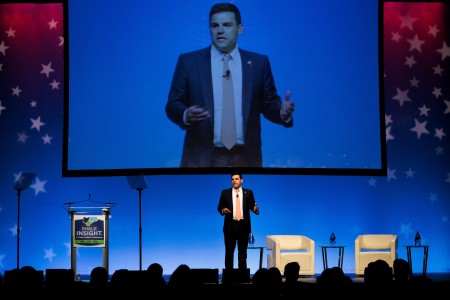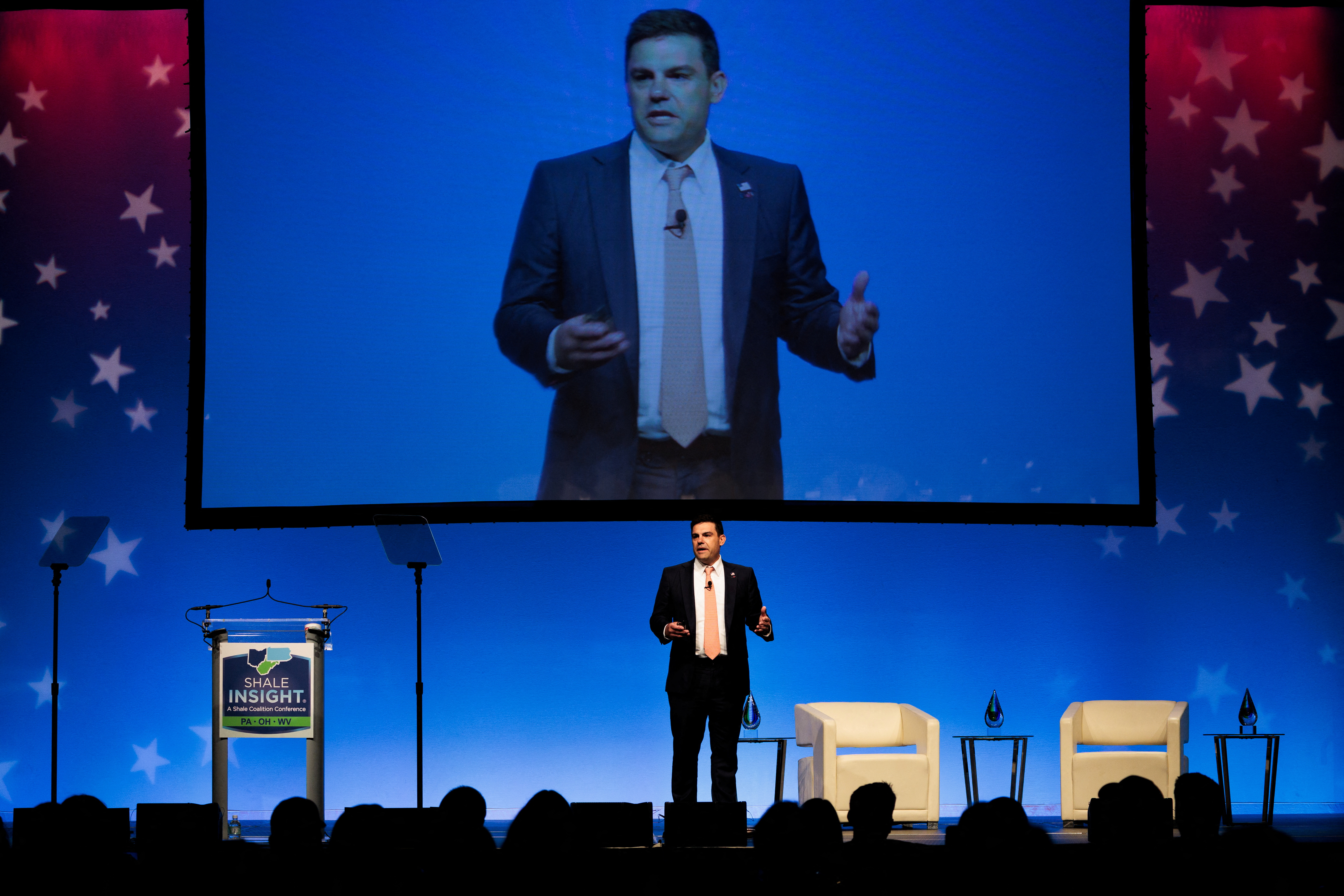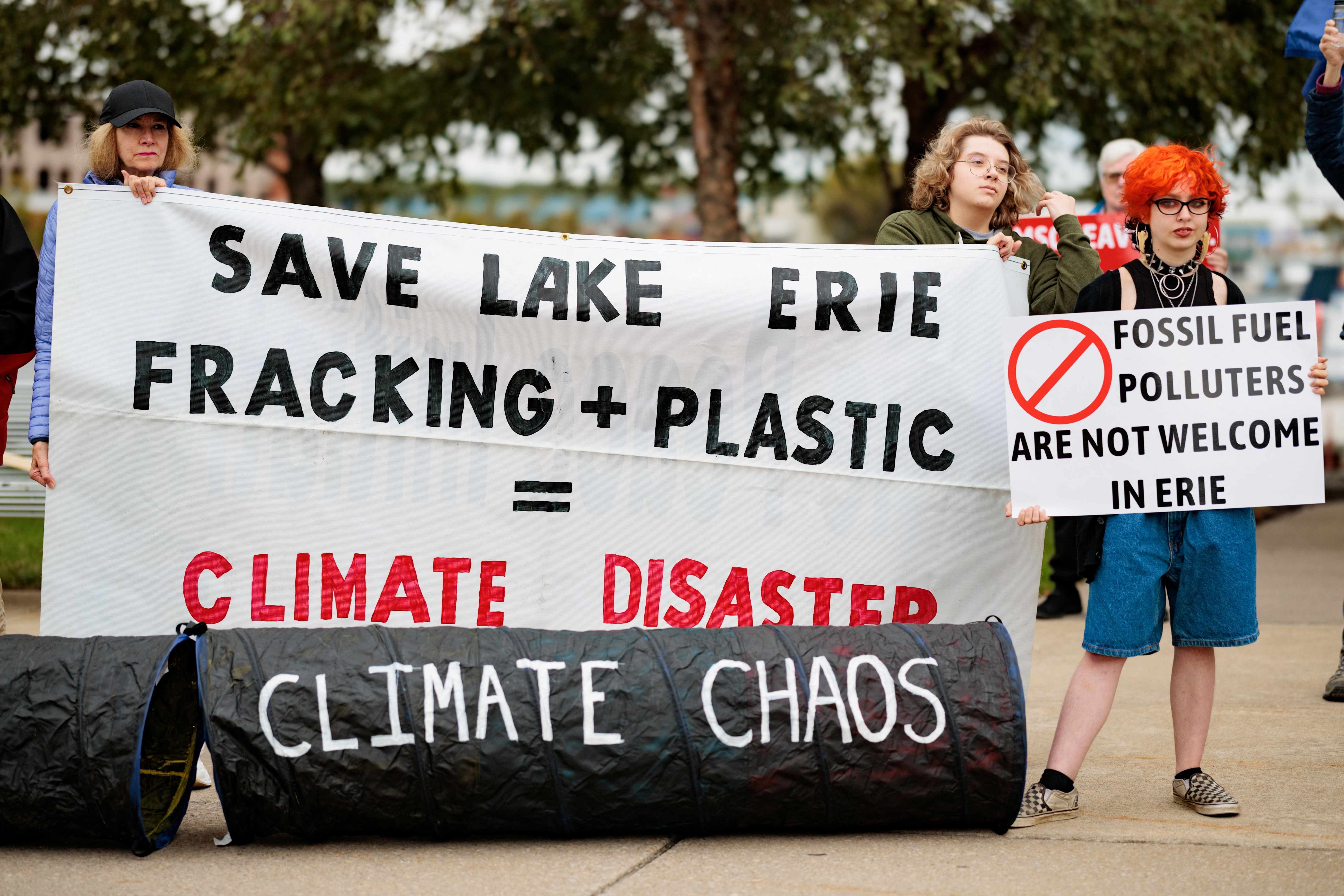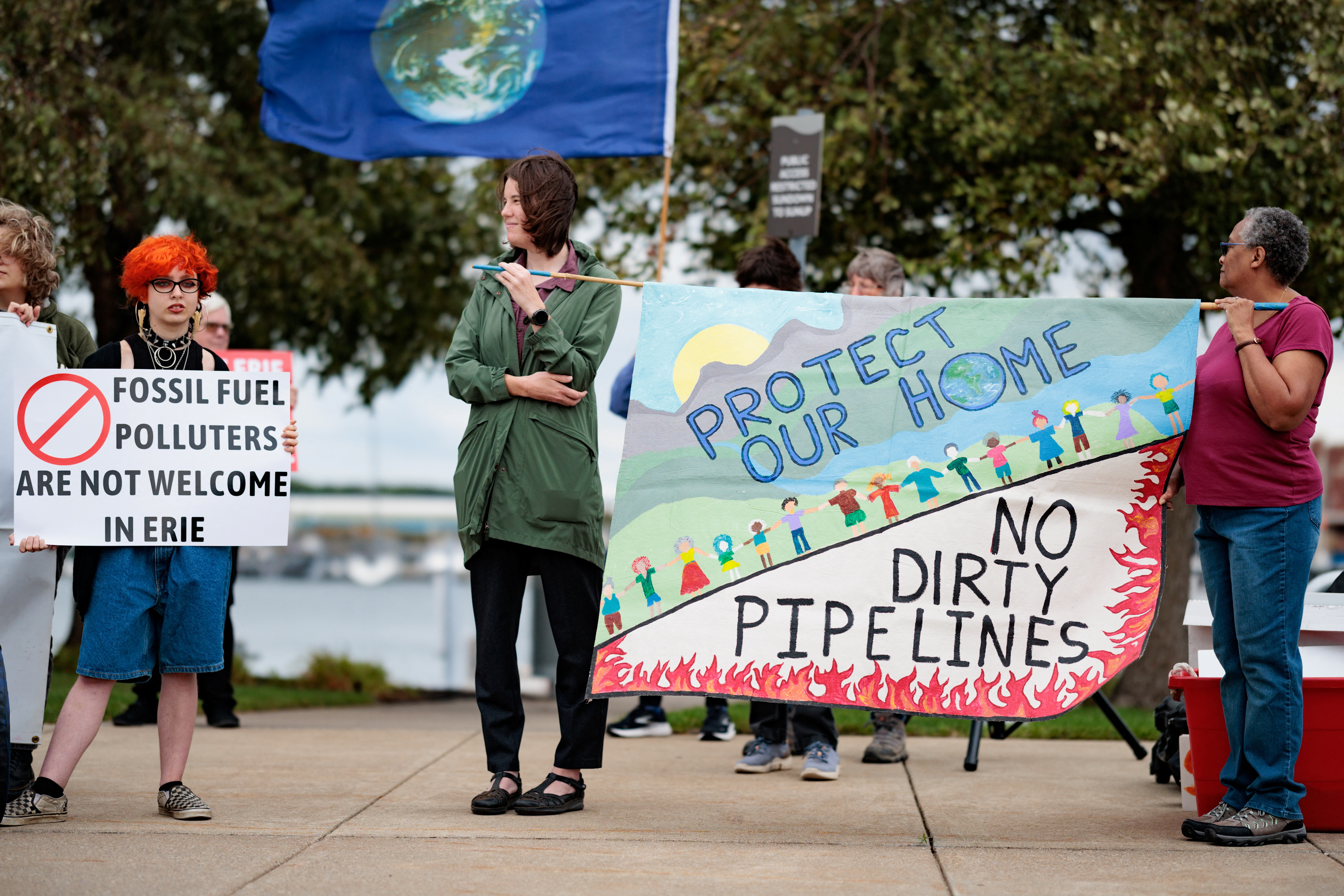By Jarrett Renshaw
ERIE, Pennsylvania (Reuters) – Drillers in energy-rich Pennsylvania this week called on Democratic presidential candidate Kamala Harris to detail her position on natural gas, a fuel the energy industry bills as clean but which climate activists say is a global warming menace.
President Joe Biden put a freeze on new liquefied natural gas (LNG) export permits in January to study its environmental impacts, in an election-year move aimed at making gains with the party’s green voting blocks.
But it is now Harris squaring off against Republican rival Donald Trump, who has said he would immediately lift the permit freeze if elected.
If she wins, she will likely be tasked with unwinding the pause and incorporating any new recommendations from the promised review, which the administration says is expected to land after November’s election.
Pennsylvania, a must win state for both Harris and Trump, is the nation’s second largest producer of natural gas. The state’s natural gas is tightly locked in shale rock and requires fracking to extract. “We need more details,” said Dave Callahan, president of the Marcellus Shale Coalition, whose members gathered in northeast Pennsylvania this week for an annual conference. Reuters talked to a dozen natural gas and drilling executives who attended the conference, all of whom said they are still guessing about Harris’s energy policy.
“I think the public should want to know what her position is on these matters prior to the election, because, ultimately, they are the ones who will be impacted,” said Rob Boulware, director of stakeholder relations for Seneca Resources Company, a major Marcellus Shale natural gas producer.
A spokesperson for Harris’ campaign acknowledged the industry’s need for clarity, but suggested the details of her approach on LNG need to be guided by the outcome of the review.
“The Vice President believes that we need to make decisions informed by the best economic and scientific information -including projected impacts on energy costs, energy security, the environment, and public health,” the campaign aide said.
Harris has adopted a plan of what aides call “strategic ambiguity” on energy policy to avoid alienating environmental activists and moderate voters this November.
She no longer supports a ban on oil and gas fracking on federal lands, like she did during her 2020 presidential run.
The United States is the world’s top producer of natural gas, and became the No. 1 exporter of LNG in 2022 as Europe looked to America to wean itself off Russia’s vast energy supplies following the invasion of Ukraine.
That’s been a boon for U.S. natural gas producers like Devon Energy Corp and Exxon Mobil Corp.
In July, a federal judge blocked Biden’s decision to freeze new LNG export permits, ruling the administration overreached its authority. However, the ruling didn’t require the administration to issue new permits and it has only issued one since.
Toby Rice, CEO of EQT, a major natural gas producer, told a room of natural gas officials at the coalition gathering that political decisions were harming consumers.
“How can we have tremendous energy resources under our feet, but energy bills in this country are going up 35%?” he asked. “These bizarre things are happening in energy because political force has overwhelmed market forces.”
Much of the increase in gas prices in recent years relates to increased global demand for U.S. natural gas since Russia invaded Ukraine.
In June, U.S. producers exported 356.4 billion cubic feet of LNG, up from 109 billion cubic feet just four years earlier, according to the latest data from the U.S. Energy Information Administration. Roughly 40% went to European allies such as Germany, Italy, and the Netherlands.
North America’s LNG export capacity, meanwhile, is projected to more than double by the end of this decade to over 24 billion cubic feet per day, the EIA projects.
Currently, gas from Pennsylvania’s Marcellus Shale flows to the Gulf Coast and Maryland’s Cove Point terminal before it is exported. But the industry harbors hopes for an LNG export facility closer to home in the Philadelphia area.
(Reporting By Jarrett Renshaw in Erie, Pennsylvania; Tim Gardner contributed reporting from Washington DC; Editing by Anna Driver)






